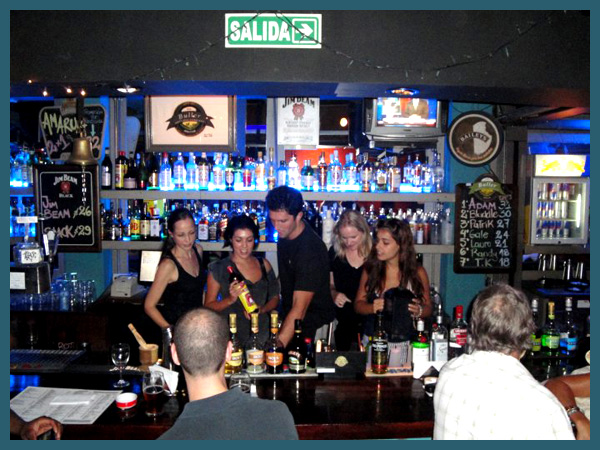
After four years of traveling deeper in South America one thing still remains constant across every country I’ve been to; People love to celebrate life and there’s no better way to break down international (or language) barriers than over a couple of drinks.
Here’s a list of all the traditional drinks across South America for you to try at home or on the road.
Enjoy responsibly…
1. Fernet & Cola (Argentina)
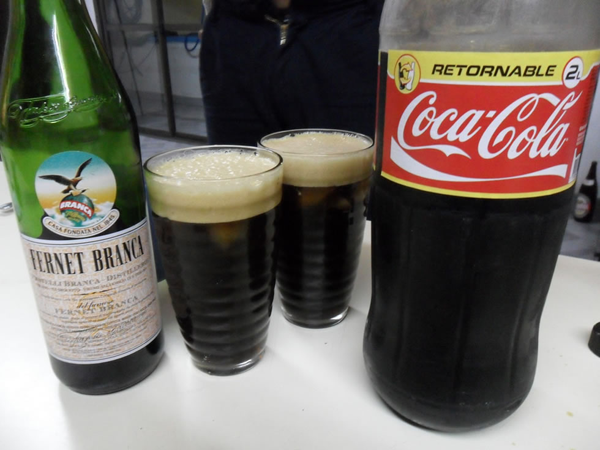
Bitter is better in the eyes of Argentines, and when they’re not tag teaming mate they’re reaching for Fernet or Campari.
Fernet is actually an Italian grape distilled spirit that tastes like a bitter version of Jagermeister. It’s dark and dangerous and is usually paired up with Coca Cola. It’s considered to be a good digestive after a big asado.
I drank way too much of it while bartending in Buenos Aires.
Campari is another Italian liqueur that’s dark red, fruity and usually mixed with orange juice or soda water. If this sounds like something that pleases you, try a Negroni. It’s one part gin, one part vermouth rosso and one part Campari.
Beers of Argentina: While there are many, Quilmes is always the popular choice.
Alternative Drink: Malbec on Malbec on Malbec
2. Caipirinha (Brazil)
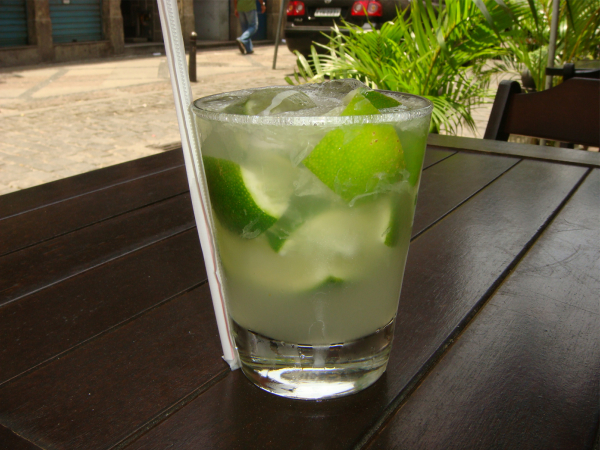
One liquor: Cachaça. One Drink: Caipirinha. Two Words: See Ya!
Although I prefer the vodka version of this sugar and lime concoction known as the caipivodka (or Caipiroska), they’re delicious either way. You just have to tell the street vendors and barmen around Rio de Janeiro not to put too much sugar.
Last week, I had my first Caipirinha de Maracuya (Passion Fruit) and it was like a carnival in my mouth. I have a feeling I’ll be drinking a lot of these during Carnival.
Beers of Brazil: Brahma, Antarctica/Boa, Original, Skol, Bohemia, Kaiser and all the other imports you know (Bud, Stella, Heine).
Alternative: No.
3. Singani (Bolivia)
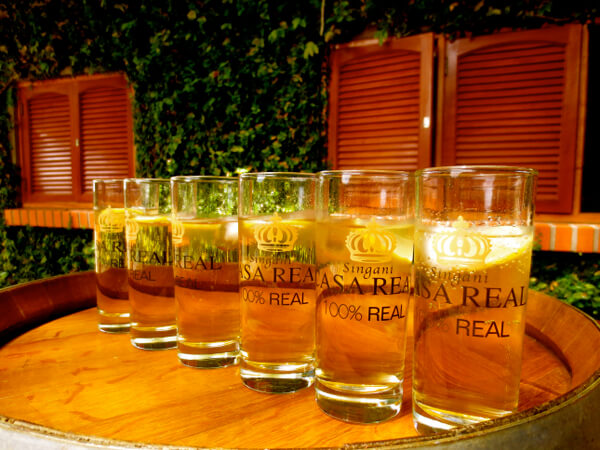
I walked into a friend’s house while living in Sucre, Bolivia and within minutes of being there his grandfather sat me down and pulled out a jar filled with grapes.
He asked if I had tried Singani before and I replied “no, but I guess now is as good of time as any.”
As lunch was being prepared in the other room we polished off 6 grapes apiece that had been marinating in Singani for months. By the time lunch was ready I couldn’t feel my face.
Singani is a clear alchoholic spirt distilled from grapes and is considered the national liquor of Bolivia and it’ll get ya drunk.
Beers of Bolivia: Huari, Pacena, Pilsener, Isenbeck
Alternative: During Carnival in Sucre, I drank a homemade brew known as Carnival leche de tigre (Tiger’s milk) which is made with Singani, cinnamon and milk. It’s dangerous but tasty.
4. Aguardiente (Colombia)
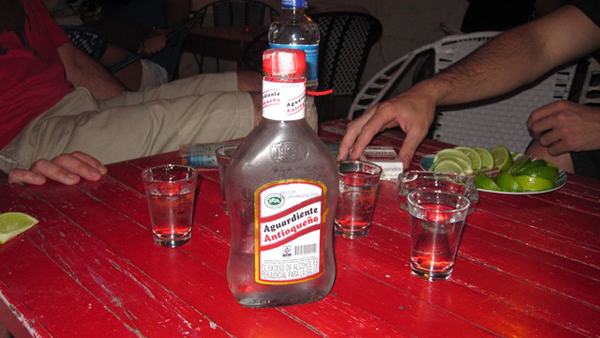
If you don’t have a bottle of Aguardiente at your table than you might as well go home. Until I arrived in Brazil, I have never experience a culture that appreciates partying quite like the Colombians. Every dance floor is crowded and every table is topped with a bottle of Aguardiente.
In Colombia, Aguardiente is an anise-flavored liqueur made from sugarcane that tastes a lot like Sambuca or Ouzo.
You take shots as a group whenever someone pours a round and keep chasers at the table. One of the cool things about ordering a bottle in Colombia is that it usually comes with little bowls of snacks like popcorn, chips and mangos.
Beers of Colombia: Aguila, Club Colombia, Pilsen, Costeña and Poker are the major players.
Alternative: If you can’t take the Aguardiente, Colombians also drink Rum and a few other cocktails.
5. Zhumir (Ecuador)

This one time while traveling in Cuenca, Ecuador, I woke up in a random apartment on the wrong side of town with only a tuxedo t-shirt and Incredible Hulk blanket on (there were no kids around). To this day, I won’t drink Zhumir.
But, if you’re looking for a good time in Ecuador… I highly recommend it.
Zhumir Latin Spirit, as it’s correctly named, is an Ecuadorian brand of spirits made of sugarcane and it tastes like sweetened fire.
Beers of Ecuador: Pilsner, Club and Biela are the two heavy hitters.
Alternative: Popular across the cold Andean region, particularly in the highlands of Ecuador, Canelazo is a delicious and comforting choice. Often sold on the streets, Canelazo is a warm cocktail made of cinnamon, brown sugar, fruit juice and Aguardiente.
6. Caña (Paraguay)*
Taxation in Paraguay is lacking and as a result the door is open for many Brazilians and Northern Argentines to treat the country like one big a Duty Free shop for alcoholic beverages like whisky and rum.
Considered to be South America’s poorest and most unequal nations, what you drink is largely influenced by what side of the line you’re on.
A very popular drink for most working class Paraguayans is called Caña, which is fermented from sugarcane.
Beers of Paraguay: Pilsen, Baviera, Dorada
7. Pisco (Peru/Chile)
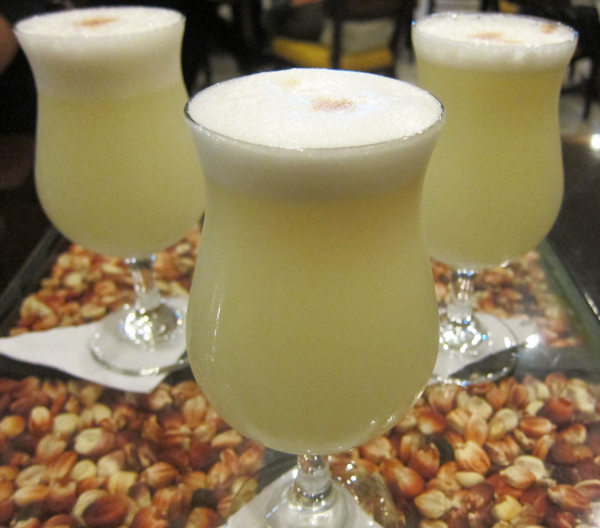
I won’t get into the great Pisco debate between these two neighboring countries, but I will say that both Peruvians and Chileans like to drink Pisco.
Pisco is a grape brandy produced in the winemaking regions of Peru and Chile and is a little bit smoother than the previously mentioned liquors.
While Pisco Sours are the traditional cocktail of choice, you can also try Piscola (Pisco and Coca Cola) or my personal favorite, the Chuflay, which consists of Pisco, Ginger Ale (or Sprite) and lime.
Sometimes I get real wild and drink Pisco with Inca Cola and make Ceviche… it doesn’t get more local than that.
Beers of Peru and Chile: Cusqueña, Cristal, Pilsen and Escudo
Alternative: Like Canelazo, Chicha is popular across the Andes and varies from region to region. Served warm or cold, Chicha is basically a Latin moonshine or hard cider that can be made from fermented grapes, apples, corn or other fruit. Depending on the brewer, it can be delicious.
8. Clerico (Uruguay)

Smothered between two big egos, Uruguay is heavily influenced by Argentina and Brazil. While Fernet and caipirinhas are flowing in places like Punta del Este, I suggest trying something a little more sophisticated.
Quite possibly my favorite drink on this list, Clerico is a white-wine version of Sangria. It’s absolutely refreshing on a warm summer day on the beaches of Uruguay and it’ll get you loose before you even know it.
Make some at home and watch the women swoon.
Beers of Uruguay: Pilsen, Brahma, Norteña, Patricia
9. Cuba Libre (Venezuela)*
There is nobody that needs a drink right now more than the people of Venezuela. And for that, Venezuelans turn to Rum.
While many people rum straight up, Cuba Libres (rum and coke) are the cocktail of choice.
I’m going to let things settle before I venture to Venezuela, but one day I really want to setup shop on the Caribbean coast of Venezuela with a nice Venezuelan woman and practice El Ritual.
Beers of Venezuela: Polar is the big dawg and Pilsener has their foot in the door as well.
—
*I have never been to Paraguay and Venezuela so I could only rely on what local friends have told me. If the information is lacking, they were probably drunk when they gave me the information.
Now, get out there and meet some locals over a few South American cocktails.
Cheers! Salud! Saude!












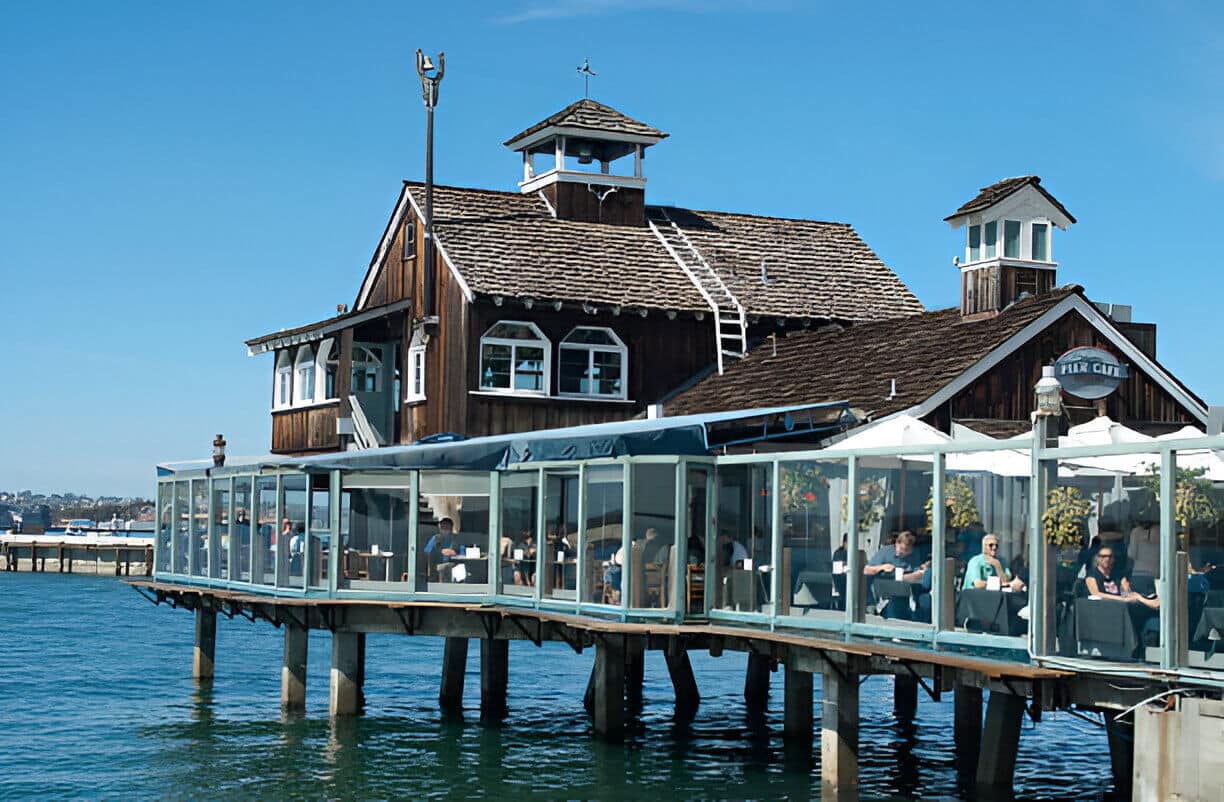


7 Responses
Great post! I’ve tried Fernet con coca, Pisco Sour and Caipirinha. But the drink from Uruguay looks like it’s worth to try as well!
Stef recently posted..Guest Post: Top Diving Locations in Sharm El Sheikh
It’s so refreshing Stef, must-have summertime cocktail for sure!
I’m addicted to your blog! Muito legal ler as aventuras de um gringo vivendo no Brasil! Bem vindo e enjoy our country! 🙂
Thank you Mariana!!
Now I know what I’ll be doing this weekend!
Nancy D recently posted..Lugano – An Evergreen Holiday Destination With World Class Parks And Rich History
Man, you gave us a real encyclopedia, detailed documentation. Thank you!
Piña colada is fantastic as well, but that’s Puerto Rican, therefore – Caribbean rather. That’s why it’s not on your list…